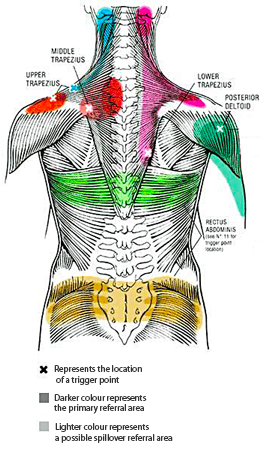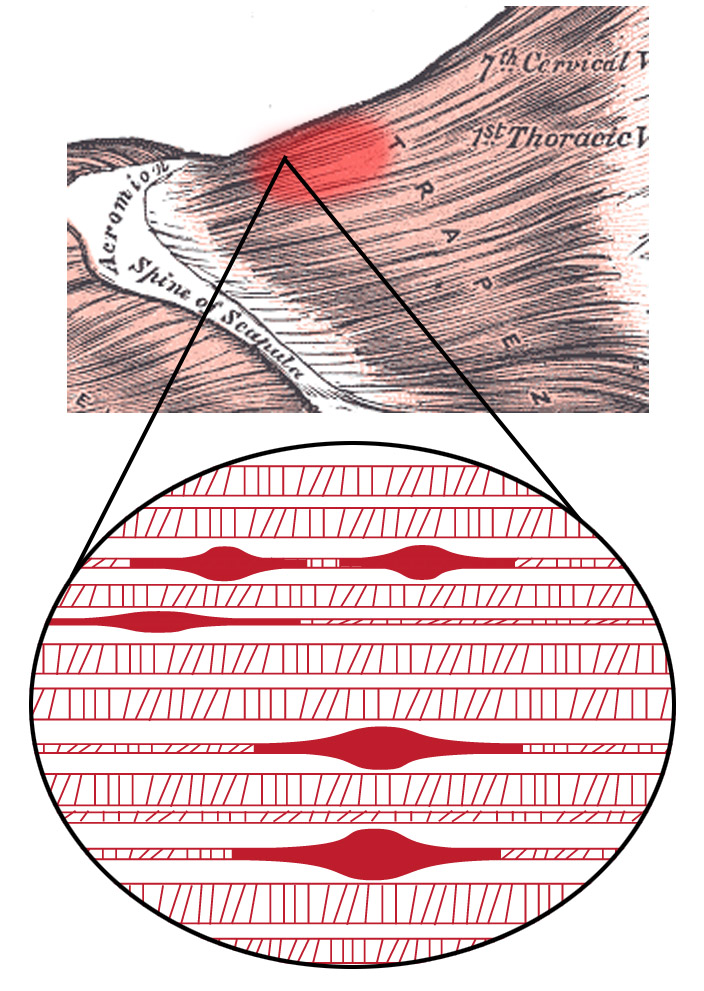In this article, we will explore the question of why knots can be painful during a massage. Our aim is to provide you with a better understanding of how knots are formed and why they can cause discomfort. We will also discuss some techniques that can help to alleviate this pain and promote relaxation. By the end of this article, you will have gained valuable insights into the nature of knots and how they can be effectively managed during a massage session. So, let’s get started!
Why Do Knots Hurt During Massage?
As massage therapists and enthusiasts, we often encounter knots in our clients’ muscles during sessions. These knots can cause discomfort and pain when pressed or massaged. But have you ever wondered why these knots form and why they can be so painful? In this article, we will delve into the science behind knots, the sensation of pain associated with them, the effects of massage on knots, techniques for treating them, tips for communicating pain level, and ways to prevent their formation. By understanding these aspects, you can seek appropriate treatment and care, while enjoying the benefits of regular massage therapy.

This image is property of themassagerebel.com.
What Are Knots in the Body?
Knots, also known as myofascial trigger points, are localized areas of tightness or tension in the muscles and surrounding connective tissue. These knots can vary in size and texture and are often tender to the touch. They can be felt as lumps or nodules under the skin, and they may cause restricted movement and muscle stiffness.
Causes of Knots in the Muscles
There are several factors that can contribute to the formation of knots in the muscles. One common cause is muscle overuse or repetitive movements that strain the muscle fibers. This can occur from engaging in certain sports or activities, performing repetitive tasks at work, or maintaining poor posture for extended periods.
Another cause of knots is muscle imbalances. When certain muscles become weak or fatigued, nearby muscles may compensate by becoming overly tight and tense. These compensatory muscles can develop knots as a result.
Why Knots Form and How They Affect the Muscle
To understand why knots form, we need to explore the anatomy of muscles. Muscle fibers are surrounded and supported by a connective tissue called fascia. Fascia helps to provide structure, support, and protection to the muscles.
When muscles are subjected to excessive stress or strain, the muscle fibers can become damaged or develop micro-tears. In response to this damage, the body initiates a healing process that involves inflammation and the formation of new collagen fibers. However, if the muscle fibers do not heal properly and become knotted or tangled, these knots can persist and cause ongoing pain and discomfort.
Knots can also affect the muscle in other ways. They can restrict blood flow to the muscle, leading to reduced oxygen and nutrient supply. This can result in muscle fatigue, weakness, and increased susceptibility to injury. Additionally, knots can create tension in the surrounding fascia, which can further contribute to muscle imbalances and restricted movement.
The Science Behind Knots
To understand why knots can be painful during massage, we need to explore the sensation of pain and how it is related to the musculoskeletal system.
Muscle Fibers and Fascia
Muscles are composed of individual muscle fibers that contract and relax to create movement. These muscle fibers are surrounded by a network of connective tissue called fascia. Fascia helps to support and protect the muscle fibers and allows them to glide smoothly over each other during movement.
Muscle Tension and Adhesions
Muscle tension refers to the level of contraction or tightness in a muscle. When muscles are under tension for prolonged periods, such as when holding a static position or experiencing stress, they can develop adhesions. Adhesions are areas of excessive fibrous tissue that form between muscle fibers or between muscle and fascia. These adhesions can contribute to the formation of knots in the muscle.
How Knots Develop in the Muscle Fibers
Knots develop when muscle fibers contract and become tightly entwined or tangled. This can occur due to various factors, including muscle imbalances, poor posture, or overuse of certain muscles. Once these knots form, they can be felt as areas of tenderness and tightness in the muscle.
Sensation of Pain
Now that we understand the science behind knots, let’s explore why they can be painful when pressed or massaged.

This image is property of static.wixstatic.com.
Nerve Endings and Pain Receptors
The human body contains specialized nerve endings called nociceptors that detect and transmit pain signals to the brain. These receptors are found throughout the body, including in the muscles and surrounding tissues. When knots develop in the muscles, they can irritate these nociceptors, leading to the sensation of pain.
Why Knots Can Be Painful When Pressed or Massaged
When knots are pressed or massaged, the pressure applied to the affected area can stimulate the nociceptors. This stimulation sends pain signals to the brain, resulting in the sensation of pain. The pain experienced during massage can vary in intensity depending on the size and severity of the knot, as well as an individual’s pain tolerance.
Referral Pain and its Relation to Knots
In addition to localized pain, knots can also cause referred pain. Referred pain occurs when pain is felt in a different area of the body than the source of the pain. This phenomenon is believed to occur due to shared nerve pathways between different areas of the body.
Effects of Massage on Knots
While knots can be painful during massage, the practice of massage therapy can also provide relief and improve the condition of knotted muscles.

This image is property of bodyinmindinstitute.com.
Breaking Up the Knot
During a massage, therapists use various techniques to break up knots in the muscles. These techniques can include deep tissue massage, trigger point therapy, and myofascial release. By applying targeted pressure and stretching, therapists can help to release the tension and restore proper muscle function.
Improving Blood Flow to the Area
Massage also helps to improve blood flow to the affected area. As the therapist applies pressure and manipulation, blood vessels in the area dilate, allowing fresh oxygen and nutrient-rich blood to reach the knotted muscle. This increased blood flow can promote healing and reduce inflammation associated with the knots.
Relieving Muscle Tension and Promoting Relaxation
Massage therapy has a relaxing effect on the body and mind. Through the release of endorphins and the reduction of stress hormones, massage can help to relieve muscle tension and promote a sense of overall relaxation. This can be particularly beneficial for individuals experiencing pain and discomfort due to knots.
Techniques for Treating Knots
Massage therapists employ various techniques to treat knots effectively. These techniques can include deep tissue massage, trigger point therapy, and myofascial release.

This image is property of blog.milkandhoneyspa.com.
Deep Tissue Massage
Deep tissue massage focuses on the deeper layers of muscles and connective tissue to address knots and areas of tension. This technique involves applying sustained pressure and slow strokes to the affected area, targeting the underlying muscles and fascia.
Trigger Point Therapy
Trigger point therapy involves the identification and specific targeting of trigger points, which are hyperirritable knots within the muscle tissue. By applying direct pressure, therapists aim to release the tension and alleviate pain associated with these trigger points.
Myofascial Release
Myofascial release is a technique that focuses on stretching and releasing the fascia, the connective tissue surrounding the muscles. By applying sustained pressure or gentle stretching, therapists can help to release tension and restore proper muscle function.
Tips for Communicating Pain Level
It is essential to communicate your pain level with the massage therapist to ensure an effective and comfortable treatment session.

This image is property of inlinephysio.com.au.
Importance of Communication with the Massage Therapist
Your massage therapist relies on your feedback to determine the appropriate pressure and techniques to use during the session. By openly communicating your pain level, you can help the therapist tailor their approach to best meet your needs.
Expressing Pain and Discomfort During the Massage
If you experience pain or discomfort during the massage, do not hesitate to speak up. Your therapist can adjust their technique or pressure to ensure your comfort and safety.
Providing Feedback for Effective Knot Treatment
After the massage, it is important to provide feedback to your therapist regarding the effectiveness of the treatment. This feedback can help the therapist understand which techniques were most beneficial and make adjustments for future sessions.
Preventing Knots
While massage therapy can provide relief from knots, it is also essential to take proactive steps to prevent their formation.
Regular Stretching and Flexibility Exercises
Regular stretching and flexibility exercises can help to maintain muscle balance and prevent the development of knots. Incorporating stretching into your daily routine can help to improve muscle flexibility and reduce tension.
Maintaining Good Posture and Ergonomics
Maintaining good posture and ergonomics is crucial for preventing knots. Whether sitting at a desk or engaging in physical activities, it is important to maintain proper alignment and avoid prolonged periods of immobilization or muscle strain.
Stress Management Techniques
Stress can contribute to muscle tension and the formation of knots. Incorporating stress management techniques into your daily routine, such as meditation or deep breathing exercises, can help to reduce muscle tension and promote relaxation.
Benefits of Regular Massage
Regular massage therapy can provide numerous benefits for both the prevention and treatment of knots.
Preventing the Formation of Knots
By addressing areas of tension and imbalances before they progress to knots, regular massage therapy can help to prevent their formation. The therapist’s knowledge and techniques can help to identify potential problem areas and alleviate muscle tension before it becomes problematic.
Improving Overall Muscle Health
Massage therapy improves blood circulation, enhances lymphatic drainage, and promotes the elimination of toxins from the body. These factors contribute to the overall health and well-being of the muscles, preventing the development of knots and promoting optimal muscle function.
Promoting a Sense of Well-Being and Relaxation
Regular massage therapy sessions provide a space for relaxation and stress relief. The calming environment, combined with the physical manipulation of the muscles, can promote a sense of well-being and relaxation, reducing the likelihood of muscle tension and the formation of knots.
When to Seek Professional Help
While massage therapy can provide relief for many individuals, there are times when seeking professional help is necessary.
Persistent and Severe Pain from Knots
If you experience persistent and severe pain from knots that does not improve with self-care measures or massage therapy, it is important to consult with a healthcare professional. They can evaluate your condition and determine if further medical intervention is necessary.
Signs of Muscle Injury or Inflammation
If you notice signs of muscle injury, such as swelling, redness, or warmth in the affected area, it is essential to seek medical attention. These signs may indicate a more significant underlying issue that needs medical assessment and treatment.
Consulting with a Healthcare Professional
If you are unsure about the cause or treatment of your knots, it is always best to consult with a healthcare professional. They can assess your condition, provide a proper diagnosis, and recommend appropriate treatment options.
In conclusion, knots in the muscles can be a source of discomfort and pain during massage therapy. Understanding the reasons behind knot pain, the science behind their formation, and the techniques for treating and preventing them can help you seek appropriate treatment and care. By communicating your pain level, practicing preventative measures, and enjoying the benefits of regular massage therapy, you can find relief from knots and promote overall muscle health. So, the next time you encounter a knot during a massage, you can confidently seek the necessary treatment and enjoy the many benefits of a kno
